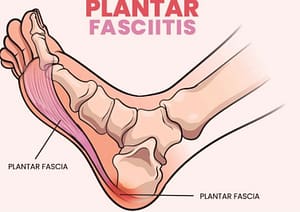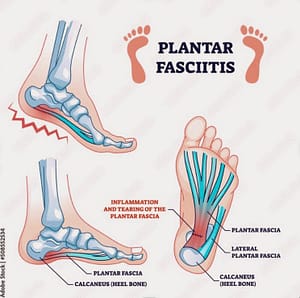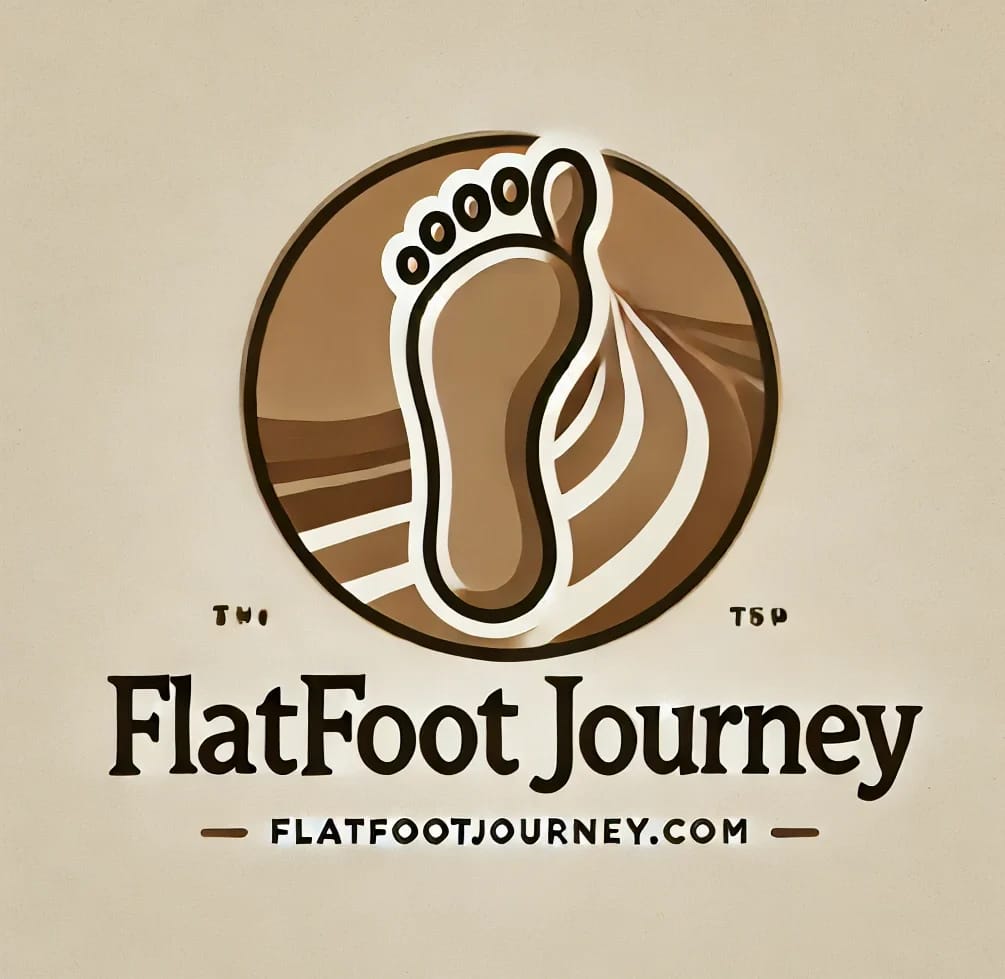I still remember the first time my feet felt like they were on fire. Not in a metaphorical, “ready-to-run” kind of way, but in a literal, searing pain kind of way—like I was walking on burning coal. It was worst in the mornings, just as I stepped out of bed. That first step sent a jolt of pain through my heels, making me hesitate before taking another. It wasn’t just me; my sister, who doesn’t even have flat feet, experienced something similar after long periods of sitting.
What is Plantar Fasciitis?
Plantar fasciitis is one of the most common causes of heel pain. It happens when the plantar fascia—a thick band of tissue running along the bottom of your foot—becomes inflamed. The result? A sharp, stabbing pain, often worst in the morning or after sitting for too long.

Plantar fascia inflammation — the main cause of heel pain in plantar fasciitis
For those of us with flat feet, the lack of proper arch support can put extra strain on this tissue, making us more prone to developing plantar fasciitis.
Why Does it Feel Like Burning?
That burning sensation I felt? It turns out it’s a common symptom of plantar fasciitis. When the plantar fascia is inflamed, it can irritate nearby nerves, creating a burning or tingling pain. It’s the kind of discomfort that lingers, making even simple movements feel like a challenge.

Different views of plantar fascia inflammation and pain location.
How I Managed the Pain?
– Morning Stretches
If you’re experiencing the same kind of pain, you’re not alone. Here are a few things that helped me and my sister:
Those first steps out of bed used to hurt like crazy. What helped me was doing a few simple stretches before standing up — like flexing my feet and gently pulling my toes toward me with a towel. It loosened the fascia just enough to make those first steps bearable.
If you want an easier option, a stretching strap makes it simple to get a deeper, more controlled stretch without straining. I found it especially helpful for mornings when my calves and arches felt extra tight.
– Tennis Ball or Massage Roller
One trick that really helped me (and my sister) was rolling a tennis ball under the foot. It loosened the fascia, improved circulation, and eased that tight, burning feeling. I’d sit in a chair, place the ball under my arch, and slowly roll from heel to toes — pausing on the sore spots. A few minutes a couple of times a day made a big difference.
If you want something designed specifically for this, a massage roller works even better. It targets sore spots more deeply than a tennis ball and feels amazing after a long day on your feet.
– Towel Stretch – Loop a towel around the ball of your foot and gently pull your toes toward you, keeping your knee straight. Hold 30 seconds and repeat 3 times on each foot.
– Ice Massage
At the end of the day, when my feet felt like they were on fire, rolling a frozen water bottle under my arches was one of the simplest ways to get relief. The coolness eased that burning sensation and gave my heels a much-needed break.
If you want something more convenient (and less messy), an ice roller is a great alternative. It glides smoothly over sore spots, gives the same cooling effect, and is easy to keep ready in the freezer.
Supportive Shoes & Insoles
Walking barefoot always made things worse for me — every step felt heavier on my arches and heels. Supportive shoes, even just for around the house, were a game changer. I’ll be sharing a full post soon on the best shoes for flat feet and plantar fasciitis, where I break down which ones actually worked for me.
But if you’re not ready to invest in new shoes yet, even slipping in a pair of Dr. Scholl’s Plantar Fasciitis Insoles can make a big difference. They add instant arch support, cushion the heel, and help ease that stabbing morning pain without needing to change your whole shoe collection. can make a big difference. They add instant arch support, cushion the heel, and help ease that stabbing morning pain without needing to change your whole shoe collection.
Gradual Movement – Instead of hopping out of bed, I flex my feet first. Simple, but it really helps reduce that first-step pain.
You’re Not Alone
Plantar fasciitis can be frustrating, especially when it feels like no one understands how much it affects daily life. But trust me, I get it. If you’ve ever felt that same burning sensation or struggled with morning foot pain, share your experience in the comments—I’d love to hear what’s worked for you!
